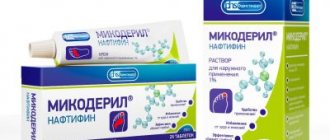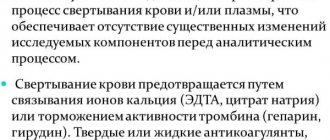Requests for eye products are a common occurrence in Russian pharmacies. Despite the fact that most drugs used in ophthalmology are dispensed by prescription, in some cases, the pervostolnik can help the buyer in choosing a drug. Some OTC drugs are particularly used for conjunctival infections. What remedies can be recommended in this case and what should visitors with prescriptions for drugs in this group pay attention to? We will answer these questions in our review of ophthalmic drops.
Causes of the disease, classification
Ocular conjunctivitis is divided into exogenous and endogenous. Endogenous refers to eye damage that occurs against the background of a general infection in the body (chickenpox, rubella, measles, tuberculosis). Autoimmune conjunctivitis is also considered endogenous. Exogenous include pathologies of the organ of vision that arose after direct contact of a pathogen (allergen, chemical) with the mucous membrane of the eyeball.
Where and how can you get infected with viral conjunctivitis?
Conjunctivitis of viral etiology is transmitted by contact and airborne droplets. Contact transmission way:
- household items: towels, dishes;
- contact with the patient (kisses, hugs, handshakes);
- technical devices (phones, tablets, computer mouse, etc.);
- door handles, soft toys, table surfaces, floors, faucets in the bathroom or toilet and more.
Through unwashed hands, the pathogen gets onto the eyelids and skin around the eyes.
The viral agent is also transmitted by airborne droplets. The patient spreads the virus by sneezing and coughing. Saliva infected with the virus ends up on the skin of the eyelids.
Complications
Conjunctivitis is a contagious disease that poses a threat to people around the patient. The infection spreads quickly, so it is important to isolate the infected person from all contact. You should also observe personal hygiene measures and, if possible, avoid touching your healthy eye. If you are not careful, the disease easily passes from a diseased organ to a healthy one, as often happens when conjunctivitis of the eyes of a child is diagnosed.
Conjunctivitis of the eye in adults is accompanied by complications, usually due to self-medication or premature termination of prescribed therapy.
The appearance of keratitis, iridocyclitis, ulcerative pathologies, and scar formation is possible. Ultimately, this can significantly reduce vision and require deeper treatment. Making an appointment Today: 23 registered
Pathogenesis
Acute conjunctivitis develops as a result of exposure of the mucous membrane of the eye to an infectious agent, chemical, high temperature or other irritating factor. As a result, the mucous membrane of the eyeball becomes inflamed and swells. A discharge begins to form in the cavity of the conjunctival sac. Against the background of the inflammatory reaction, the capillaries expand, which leads to the appearance of red vascular branches. As the inflammatory process develops, swelling and redness from the conjunctiva of the eyeball moves to the eyelids.
List of essential medications
In addition to information about which drops can eliminate the signs of conjunctivitis and help cope with eye fatigue, several other remedies that require a more detailed discussion should be indicated:
- Gludantan is a powder that must be dissolved before use.
- Poludan is a remedy to combat the symptoms of conjunctivitis. The package does not include a dropper, so you need to buy an additional pipette.
- Oftadet is used not only in cases of acute conjunctivitis, but also for gonorrheal lesions in children.
- Sofradex is an ointment that eliminates inflammation and can be used for a large number of ophthalmic problems.
- Florexan is used mainly for mild conjunctivitis. In addition, this solution is excellent for disinfecting contact lenses.
- Vigamox is a very effective drug that is prescribed to treat corneal ulcers. It is mainly suitable for elderly patients.
- Indocollyr is often prescribed for infectious diseases, including in the postoperative period.
- Rohto normalizes not only the eyes, but the entire body. This medicine is not used for treatment, but for the prevention of inflammatory processes.
You should also note medications that contain cortisone or chloramphenicol. When using such drops, pain and burning in the eyes may occur during instillation.
All of the drugs listed are quite effective, but only an experienced doctor can choose the one that is needed in a particular situation. In an emergency situation, that is, when it is not possible to visit a doctor in the near future, and conjunctivitis progresses, one of the medications can be used. In the future, at the first opportunity, you still need to consult a doctor to clarify the correct choice of drug. In addition, different drugs are used for adult patients and for children, so you need to be careful not to harm the child. For example, drugs for adults are usually more aggressive and cause pain and lacrimation; they are contraindicated for children. Sometimes the doctor prescribes a course of antibiotics to treat purulent conjunctivitis, but all this is individual and determined by the type of disease.
Symptoms of conjunctivitis
The disease has a number of specific symptoms. These include:
- itching;
- burning sensation;
- foreign body sensation;
- intolerance to bright light;
- lacrimation;
- redness of the mucous membrane of the eyeball;
- closing of the eyelids, their swelling and redness.
Eyelashes may stick together due to drying of the discharge. In some cases, vision deterioration is observed. With an exogenous infection, one organ of vision may be affected first, and then the other. With endogenous, both eyeballs are often damaged simultaneously.
Symptoms
| symptoms of viral conjunctivitis | symptoms of allergic conjunctivitis | symptoms of bacterial conjunctivitis |
Both eyes may be affected. |
First one eyeball is damaged, then the second. |
Both organs of vision are affected. Not transferable to other people. |
Reviews from adult patients
“While working at school, I contracted conjunctivitis from one of the children.
I knew the symptoms of the disease, but I was surprised that such a disease could not be treated with the first drops purchased at the pharmacy.
As it turned out, I had
bacterial conjunctivitis , and the doctor prescribed me an antibiotic in the form of Tobrex drops . The treatment took a little more than a week , after which all the symptoms of the disease completely disappeared.”
Tatyana Anisimova, Zelenograd.
“I have chronic bacterial conjunctivitis , which makes itself felt almost every winter, and I am at risk because I work in open areas and in winter my eyes are exposed to hypothermia.
This year the same thing happened: the first signs of conjunctivitis appeared in the first days of cold weather.
But I already know how to deal with this, and in addition to herbal lotions, I use antibacterial drops Albucid .
According to the instructions, they stimulate eye protection and prevent the disease from becoming severe, and after just five days I can start working again without complaining of eye problems .”
Alexey Nemolyaev, 40 years old.
Diagnostics
If symptoms of the disease appear, you must visit an ophthalmologist. The specialist will conduct an examination and collect anamnestic data.
When examining a patient to make a diagnosis, the doctor pays attention to redness, swelling of the mucous membrane of the eyeball, and the presence of discharge.
Further additional examination methods are prescribed:
- visometry - assessment of visual function;
- perimetry - determination of visual fields;
- biomicroscopy - study of optical media and tissues of the eyeball;
- ophthalmoscopy - assessment of the fundus;
- keratopachymetry - determination of corneal thickness;
- fluorescein test - detecting changes in the anterior part of the eyeball and tear ducts;
- virological and bacteriological research - determination of viruses and bacteria;
- examination for demodex and other techniques if necessary.
An examination by other specialists is also required: an otolaryngologist, a therapist, a dentist, an infectious disease specialist, a neurologist. Allergic conjunctivitis requires allergy testing and consultation with an allergist.
What are antibiotic eye drops?
For your information! Infectious eye pathologies arise due to the spread and increased activity of pathogenic microflora on the surfaces of the eye tissues (and sometimes the infection develops inside the tissues).
Such pathogens be eliminated only with the help of antibiotic drugs.
However, these agents are extremely rarely used for viral or fungal pathologies (separate agents have been developed for these microorganisms).
Antibiotic eye drops are drugs for topical use only (that is, they are intended for instillation and are not used for oral administration).
Such liquid solutions
may contain various basic and auxiliary substances and differ in consistency and effectiveness.
Currently, there are several groups of antibiotics, each of which contains dozens of drugs, but in ophthalmology antibiotics of the tetracycline, macrolide and fluoroquinolone groups are used.
Operating principle
In general, the effect of antibiotics on pathogenic microflora can be defined as the destruction of bacteria by aggressive chemical components included in such drugs.
In practice, such drugs are divided into two types based on their principle of action: bacteriostatic and bactericidal .
It is worth noting! The former do not destroy the microorganisms themselves directly, but act on their cells so that the bacteria stop developing and multiplying and, as a result, colonies of microorganisms die out.
At the same time, at some point (when their number becomes less than critical), the body’s immune system joins the fight.
Antibiotic eye drops for conjunctivitis
The most common ophthalmic disease caused by bacteria is conjunctivitis.
Attention! Depending on the type of conjunctivitis, the severity and age of the patient, antibiotics for this disease can be prescribed in different combinations, which can combine:
- moxifloxacin;
- streptomycin;
- Oftavix;
- kanamycin;
- sparfloxacin;
- neomycin;
- levofloxacin;
- monomycin;
- norfloxocin;
- gentamicin;
- lomefloxocin;
- sizomycin;
- ofloxocin;
- netilmicin;
- amikacin and other drugs.
Groups of drops
Note! There are three groups of antibiotic drops, from which you can select drugs to target specific pathogenic bacteria.
In ophthalmology, drugs of one of the following types are used:
- Aminoglycosides . The principle of operation of such solutions is based on the effect directly on the contents of pathogen cells . The active components of such drugs penetrate bacterial membranes and disrupt the vital functions of microorganisms. In turn, such drugs are divided into three generations: the first is the oldest and least effective and at the same time has a fairly large number of side effects. The most modern third-generation products not only have minimal negative effects on the body, but also fight microflora that are resistant to weaker drugs. In total there are about one hundred ophthalmic solutions of this group , but their number is growing every year. Although at the same time, some of these products are falling out of use due to the emergence of cheaper and more effective analogues.
- Fluoroquinolones . This is a relatively new group of drugs, but despite their high effectiveness, such drugs have many contraindications and side effects. This is due to the fact that fluoroquinolones are absorbed into the systemic bloodstream, through which they are distributed throughout the body. But the advantage of such drops is their activity against most bacteria and the fastest possible effect .
- Separately, there are products based on the antibiotic chloramphenicol , which disrupts the processes of protein synthesis in bacterial cells at the DNA and RNA level . Such drugs are the least expensive, have the fewest side effects (therefore they are prescribed even to children and pregnant women), but they are not always effective.
Useful video
This video shows how to put drops into your eyes:
Antibiotic eye drops are the only effective treatment for bacterial eye infections .
Unfortunately, many consumers buy such drugs on their own, based on the recommendations of friends.
And in some cases, this leads to a worsening of the condition or to ineffective treatment, and to avoid this, you should not self-medicate , but at the first signs of illness, consult your doctor.
List of effective remedies for children
Stay up to date! Antibiotic eye drops are prescribed to children with caution, as such drugs can lead to the development of various side effects.
For this reason, experts prefer to combine several weak drugs rather than prescribe one strong drug to a child. Among such solutions, the following list is distinguished:
- Vigamox . A fluoroquinolone group drug based on the antibiotic moxifloxacin. The drug directly affects bacteria at the cellular level, stopping the processes of their development and reproduction. Vigamox can be instilled up to three times a day. The course of treatment lasts on average up to five days (in serious cases – about a week).
- Maxitrol . Combined drops that not only destroy the cells of pathogenic microorganisms, but also have a bacteriostatic effect, preventing further growth of bacteria. It is used in different dosages depending on the severity of the disease. If the form is not severe, instillations are performed every six hours. In severe forms of disease, instillation in the first few days can be performed hourly.
- Vitabact . A drug containing the active component picloxidine. Has antibacterial and antimicrobial effects. It is well tolerated by young children and is prescribed to patients aged one year and older. Depending on the severity of the symptoms, you can instill the remedy two to six times per day for no longer than ten days, but if necessary, the course of treatment can be extended by the attending physician.
- Gentamicin. Broad-spectrum drops that make critical changes in the RNA structure of the pathogen microorganism. Instillations are performed at a frequency of 4 hours, two drops each, but in case of acute illness, gentamicin can be instilled every hour.







